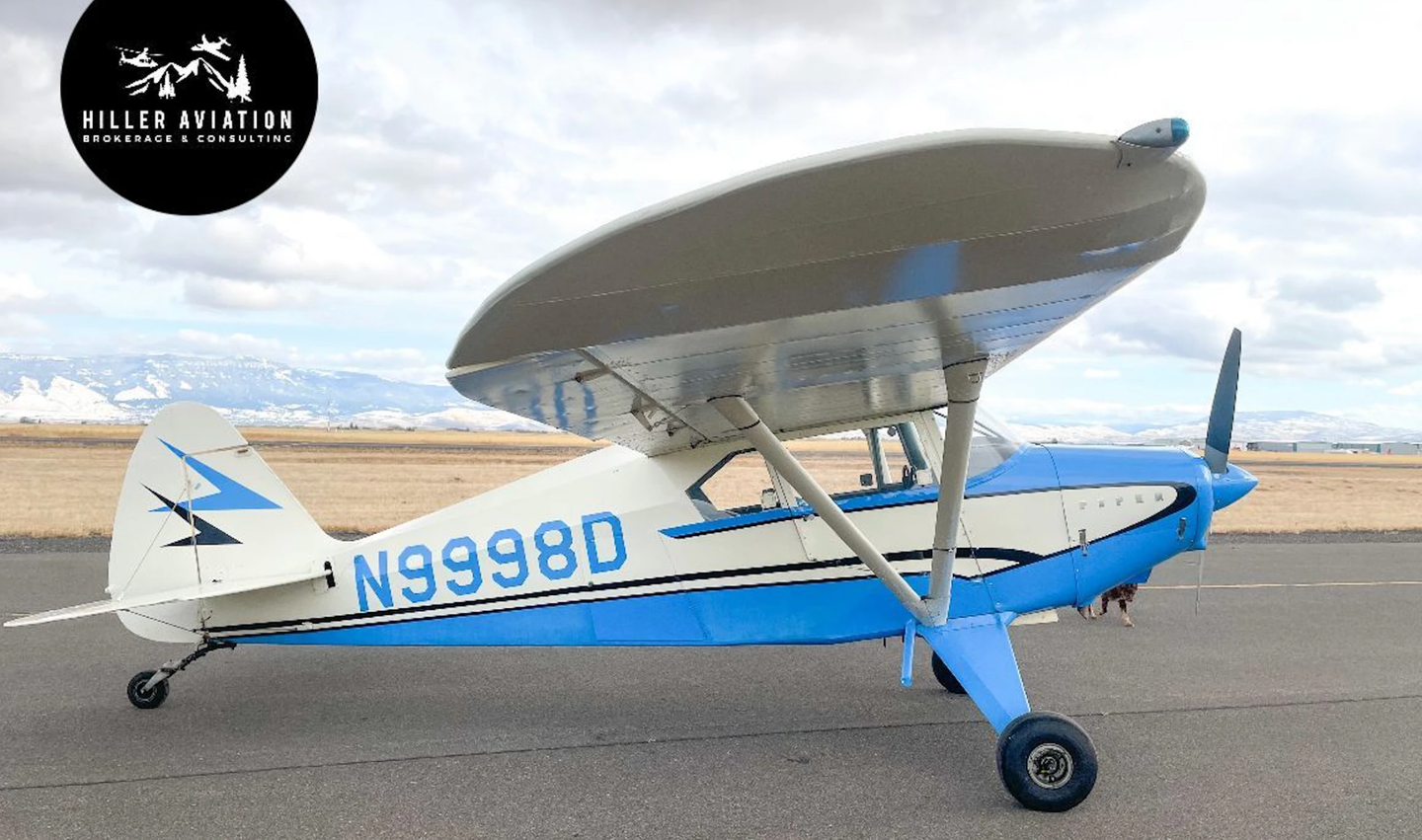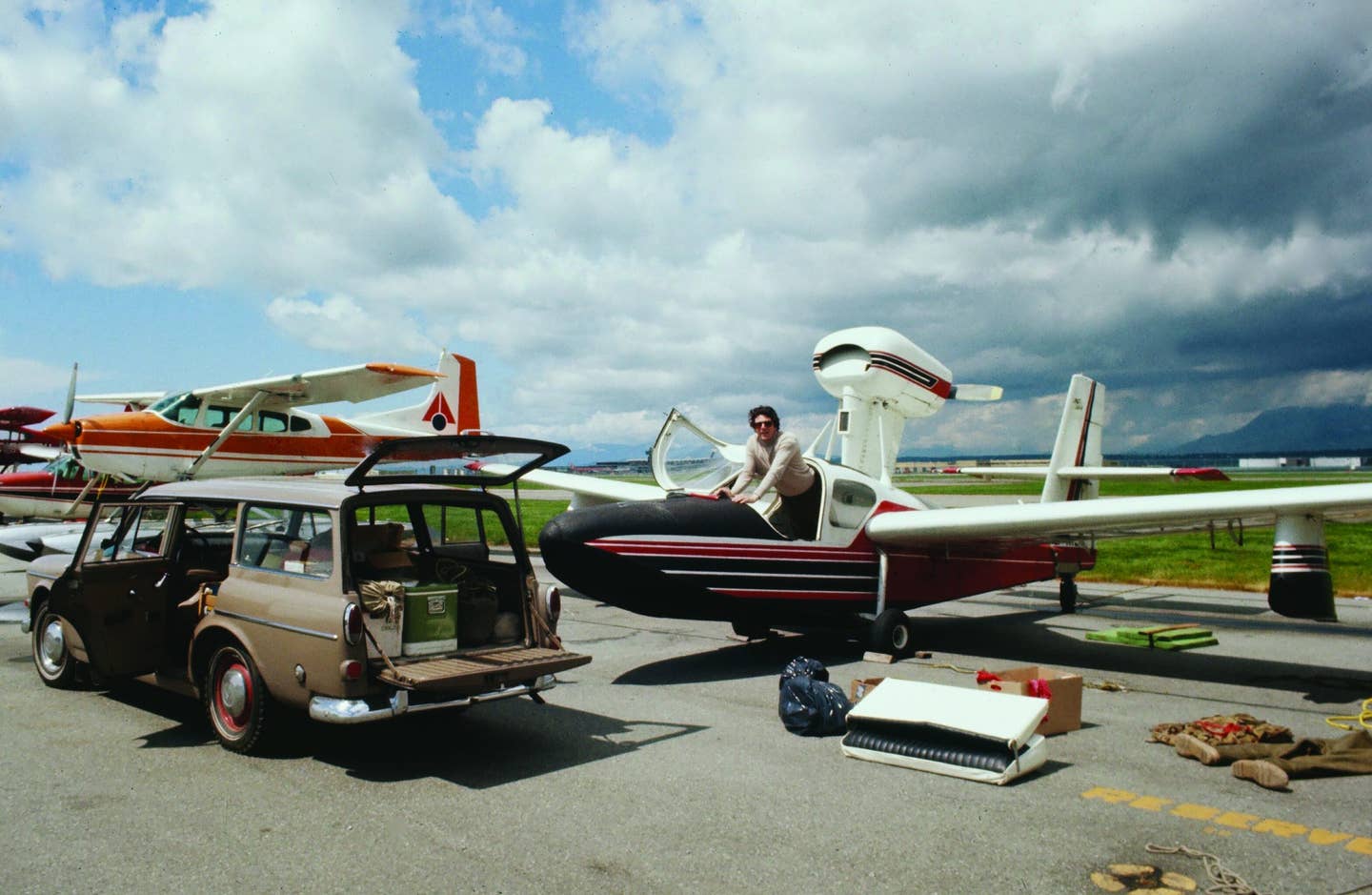Piper Matrix: The Second-Year Test
A year after Piper shut down the Saratoga HP, the Matrix helps pick up the slack
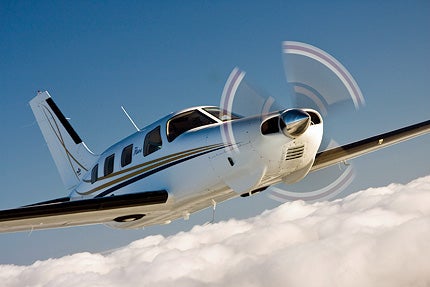 |
When Cessna introduced the P210 back in 1978, I was one of those idiots who predicted they'd have a hard time selling "any single-engine piston airplane with a base price over $100,000."
Despite my cynicism, Cessna did all right. Between 1978 and 1986, it sold about 900 of 'em. (The last 1986 Cessna P210Rs had an average-equipped price of $323,000.)
A few years ago, the base price of the Piper Malibu Mirage passed $1 million, and considering the overall success of the model, I now know better than to make stupid predictions. In the intervening quarter century, I've learned not to make value judgments.
Still, many pilots wonder what will happen to the Mirage and other high-ticket piston models if any of the VLJs make it into production at anything close to their proposed prices. No matter how spectacular the financial debacle of the Eclipse 500, Cirrus and Diamond are proposing small jets for prices below $2 million. Even if they come to market at $1.8/$2 million, what will that do to Mirage sales at a price point of $1.2 million?
It's true that pressurization is perhaps the ultimate luxury in an airplane (once you fly it, you'll never want to go back), but it's not for everyone, either operationally or financially. Modern pressurization systems are relatively automatic---set it and forget it---but some pilots don't feel the need to breathe compressed air.
Piper's thinking in late '07 was that many Mirage pilots don't often loft up into the flight levels anyway, so why not retain the popular Mirage but offer a model that would dispense with pressurization altogether?
Depressurizing an existing model isn't a new idea for expanding a product line. Cessna did it back in 1980 with the Cessna 335, an uninflatable 340. That plan didn't work, and the model was retired after only a year. Piper was aware of that failure, but it reasoned that the Matrix had a better chance of success because of its market and price point.
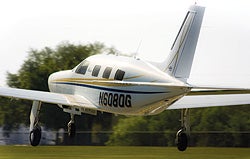 The six-place Piper Matrix offers the largest cabin in its class. Powered by a 350 hp Lycoming TIO-540-E2A, the unpressurized aircraft transports pilots and passengers in a comfortable, luxurious environment. The six-place Piper Matrix offers the largest cabin in its class. Powered by a 350 hp Lycoming TIO-540-E2A, the unpressurized aircraft transports pilots and passengers in a comfortable, luxurious environment. |
For all those reasons, it made perfect sense when Piper introduced the Matrix, an unpressurized version of the Mirage priced $385,000 less than the inflatable airplane. As the world's top turbocharged piston machine, the Matrix was targeted to reach down to the four-seat super-plane models---the Mooney Acclaim S, Cessna 400TT and Cirrus SR22-G3 Turbo, plus the six-seat G36 Bonanza and Cessna T-Stationair---and steal sales by offering pilots an airstair door and cabin-class comfort better than anything else available.
Two years later, the Matrix sells for a base price of $819,000 (with Avidyne avionics) compared to the Mirage's entry-level $1.19 million. The delta is still a substantial $300,000, definitely large enough to get the attention of potential buyers above and below the price line.
What you lose (or gain, depending upon your point of view) in the step down from Mirage to Matrix is 200 pieces of airplane that subtract about 150 pounds from empty weight. That's a more significant advantage than you might think. Airplanes, like people, tend to gain pounds with age, and empty weight reduction always has been one of the most difficult tasks in aircraft manufacturing. Piper accomplished it in spades with the Matrix.
Excluding the accoutrements necessary to seal a pressure vessel eliminates the beef-up associated with an inflated cabin. It also allows for a slightly cleaner, less complicated panel as the pressurization controls go away---a major cost savings according to Piper.
Similarly, the Matrix removes the emergency oxygen system between the front cockpit and the second row of seats, freeing up storage space behind the front office. The company also installs thinner Plexiglas more appropriate to an unpressurized airplane; it's lighter but apparently no less stout.
The roughly 150-pound savings translates to (nearly) one additional person in the airplane, something the Mirage always needed. Specifically, the useful load increases from 1,236 pounds on the Mirage to 1,389 pounds on the Matrix, while the max takeoff weight of both airplanes remains at 4,340 pounds.
Standard fuel remains the same 120 gallons (720 pounds), so full-fuel payload now works out to 669 pounds, available as you like it in either cargo or people. If the mission is typically short, and you can leave 20 gallons in the truck, you can carry nearly 800 pounds in the cabin: five midsized folks or four standard types plus baggage.
Keep in mind, this is the standard airplane without the known icing system, speed brakes or any of the other popular options that most buyers select. Adding the extras would obviously subtract from payload.
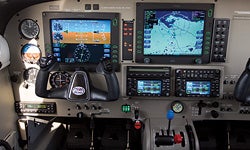 The Piper Matrix's cockpit comes standard with Avidyne Entegra avionics and the S-Tec 55X autopilot; alternatively, pilots can opt for Garmin's G1000 system or an upgrade to Avidyne's Release 9. Other options include speed brakes, a FIKI package and AmSafe seat belts. |
If you need to carry a truly big cabin load, there's a limit. The Matrix has a zero fuel weight of 4,123 pounds to minimize the bending moment on the center section. This means that if you're planning to operate at full gross weight, then you'll have to fly with a minimum of 36 gallons. At reduced power settings, you could probably endure for 1.5 hours plus reserve.
The fuselage configuration remains unchanged from the pressurized airplane, and that means no cabin baggage door. For obvious reasons, pressurized designs minimize the number of portals into the pressure vessel to facilitate an airtight cabin, so there was no logic in cutting a baggage door.
As partial compensation, there's a separate 13 cubic-foot baggage compartment up front, positioned between the forward cabin bulkhead and the engine firewall, with doors on each side. The forward baggage hold is ideal for balancing an aft cabin load with as much as 100 pounds of cargo. Its proximity to the engine assures that it's always heated, but it's not pressurized, so remember to bring your toothpaste inside.
Removing all the Mirage's pressurization plumbing means that you can dispense with any concern for "cycles," a definition of airframe wear (preferably without the tear) associated with pressurized airplanes each time the cabin is inflated and deflated. All jets are pressurized, and the airlines are painfully aware that cycles can be an equal or greater limitation than airframe/engine hours.
Another perhaps more peripheral benefit of leaving out the pressurization system is that the air-conditioning suddenly becomes super cool. All pressurized aircraft require AC to reduce bleed-air temperature before introducing it to the cabin, but because the Matrix is no longer pressurized and still uses the same high-capacity compressor, it does a much more efficient job of reducing cabin temperature than the Mirage. If you need to operate in the Deep South or Southwest in summer, the Matrix may be an ideal choice.
Apparently, Piper hit a nerve with the introduction of the Matrix. Almost immediately, the new model became the company's best-selling airplane. In 2008, Piper sold some 216 airplanes, and nearly half of them were the new Matrix model. Now, the question is whether the Matrix will continue to dominate Piper sales and sell as strongly as it did in the initial year of production.
I flew with Piper's chief pilot, Bart Jones, in conjunction with Sun ’n Fun. The airplane was the display machine from the show, so it had every option. That included speed brakes, the FIKI (Flight Into Known Icing) package, traffic and weather upgrades to the Avidyne flat-panel display, AmSafe seat belts and some cosmetic interior and exterior options. (The latest model will offer a Garmin G1000 avionics suite in place of the Avidyne system for an additional $50,000.)
Like its big brother, the Mirage, Piper's Matrix is an imposing airplane on the ramp. It sits tall on its long gear, and the double clamshell door provides perhaps the easiest entry into the aft cabin of anything in the class. Inside the cabin, the quality control and attention to detail are exactly what you'd expect.
Despite the substantial power under your right palm, moving more than two tons of airplane off the line isn't a simple task. The Matrix has to gather itself for takeoff, but by the time you've rotated off the runway, the airplane is ready to climb away. Plan on an easy 1,000 to 1,200 fpm at 125 knots for the first 10,000 feet.
Part of the marketing on the Matrix is to sell an airplane to folks who won't fly high on every trip, and true to form, the PA46-350T turns in reasonable speed at nonoxygen altitudes. Trimmed and level at 10,500 feet, expect about 180 knots at a max cruise burn of 21 gph. If you're willing to climb to FL250 and use the same power, you'll see more like 210 knots. For those strange pilots who like to buy fast airplanes and fly them slowly, you can come back to 15 gph and still score 165 knots down low, 190 knots up high.
Piper imagines the Matrix will be operated below positive-control airspace most of the time, so max altitude typically will be 17,500 feet. At that height, you can expect about 190 knots at max cruise, 175 knots pulled back to 55%.
In-flight handling is the same as that of the Mirage, and there's every reason to assume the Matrix will make an excellent IFR platform. Over the last 20 years, I've flown a dozen or so PA46s across the Atlantic and Pacific, and the airplanes have provided a consistently excellent ride. The standard S-Tec 55X autopilot does a good job of driving the airplane in anything short of a typhoon. (Eight years ago, on an eastbound Mirage delivery from Sendai, Japan, to Aachen, Germany, I landed at Guam just ahead of Typhoon Pongsona, refueled and jumped straight back into the sky for the 1,700 nm flight to Majuro. The autopilot defeated the pretyphoon turbulence and made the continuous 3,500 nm of travel almost tolerable. Still, I won't do that again.)
| Avidyne Release 9: Available For The PA46 |
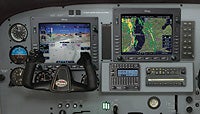 For those pilots who prefer the upcoming Avidyne Release 9 glass-panel display, Piper will offer a voucher program as an option in Matrix, Mirage and Meridian aircraft. Any new Avidyne Entegra--equipped PA46 will be upgraded for $50,000 when the system is certified in 2011. This will match the price of the Garmin G1000 option in existing PA46 models. For those pilots who prefer the upcoming Avidyne Release 9 glass-panel display, Piper will offer a voucher program as an option in Matrix, Mirage and Meridian aircraft. Any new Avidyne Entegra--equipped PA46 will be upgraded for $50,000 when the system is certified in 2011. This will match the price of the Garmin G1000 option in existing PA46 models.
Release 9 will include up to three flat-panel IFD5000 readouts, all operated by a QWERTY keyboard, coupled with dual digital, 16-watt NAV/COM radios and dual WAAS/RNP GPS receivers. Each IFD5000 is capable of performing all functions with no unfamiliar or reversionary modes. The Avidyne Release 9 is specifically designed to eliminate complexity, reduce head-down time and enhance safety. Learn more at www.avidyne.com. |
Having operated several Mirages at weights well above 5,300 pounds (1,000 over gross), I can attest that the airplane is a true Big Bird. Handling with the 43-foot wingspan is deliberate and positive, though anything but quick. Even so, landings are easily predictable and no special challenge if you're fairly competent and simply awake. Recognizing flare height is no big challenge, and it's easy to ground the airplane with style, even in a strong crosswind.
Pricewise, the Cessna 400TT is closest to the Matrix base price at $635,000, but remember, the 400TT is a four-seater. The G36 Bonanza comes next at a base $605,000, though that may not be a fair comparison, considering that the Bonanza isn't turbocharged. The Cirrus SR22-G3 Turbo checks in at $598,500, and Mooney's Acclaim S is $579,000; these four-seaters are quick competition for the Matrix, but again, they're four-seaters. The Cessna T-Stationair, at a base $565,000, follows on the list. The utilitarian T206 is the slowest airplane of the lot, 40 knots behind the Matrix, but it has large left-side cargo doors to help enclose six folks.
The Matrix is the most expensive airplane in the group, but it's also the only cabin-class machine with the largest cockpit, an airstair door and, perhaps most important of all, the lineage of the world's most luxurious piston single, the Piper Mirage.
| FLIR In The PA46 |
 Piper is determined to offer the most sophisticated avionics package in general aviation. The Vero Beach, Fla., company's latest innovation is a fully capable Forward-Looking Infrared (FLIR) system as optional equipment in the Matrix, Mirage and Meridian. Piper is determined to offer the most sophisticated avionics package in general aviation. The Vero Beach, Fla., company's latest innovation is a fully capable Forward-Looking Infrared (FLIR) system as optional equipment in the Matrix, Mirage and Meridian.
Using heat-sensitive infrared- or thermal-imaging cameras, similar to those used by police and military aircraft, Forward Vision's EVS-100 and EVS-600 offer pilots the equivalent of a real-world view of the forward quadrant, no matter what the weather or lighting conditions. During the day, EVS penetrates haze, fog, smoke and precipitation up to 10 times farther than the unaided human eye. On the ground, EVS allows pilots to see animals or unlit obstacles during night taxi or takeoff. In flight, EVS depicts clouds that might otherwise be hard to see, and notes ground features with improved detail both day and night. The EVS-100 provides pilots with an infrared field of view that's 40 degrees wide by 30 degrees tall. Unlike synthetic vision, a computer-generated image based on an extensive database, the EVS is a standalone device that presents a real-world image of current terrain, vehicles and even people. At this writing, prices hadn't been announced. Learn more at www.forward-vision.net. |
Check out the newest Matrix and other fantastic single-engine airplanes in our latest Piston Singles Buyer's Guide.

Subscribe to Our Newsletter
Get the latest Plane & Pilot Magazine stories delivered directly to your inbox


